Endangered species list grows by 2,000. Climate change is part of the problem
MICHAEL PHILLIS
Mon, December 11, 2023
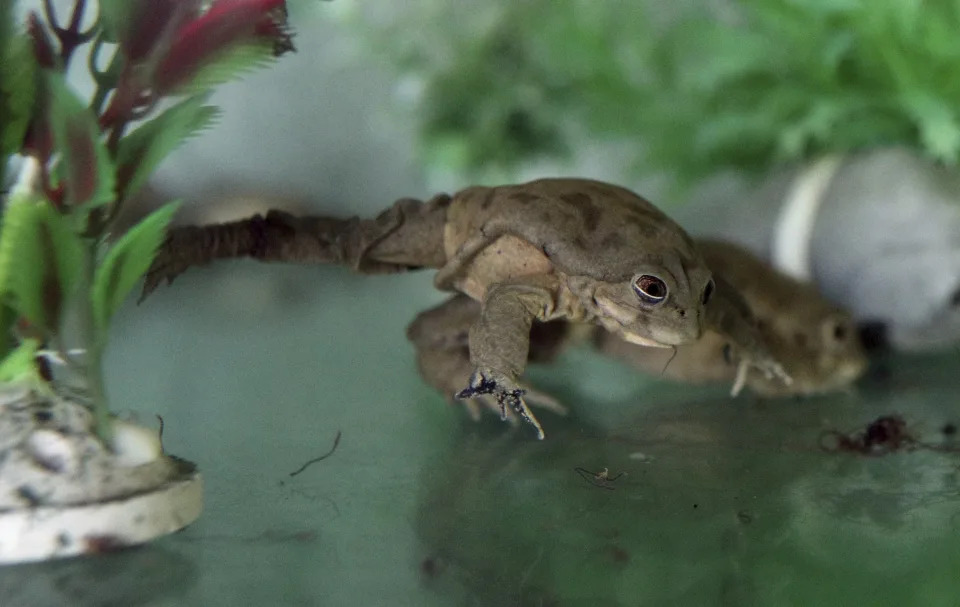
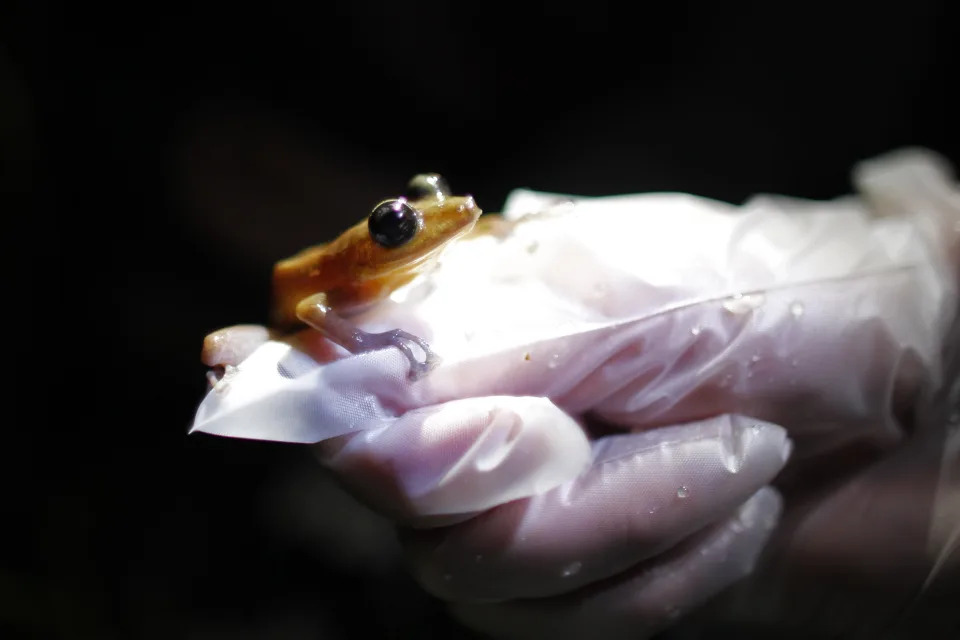
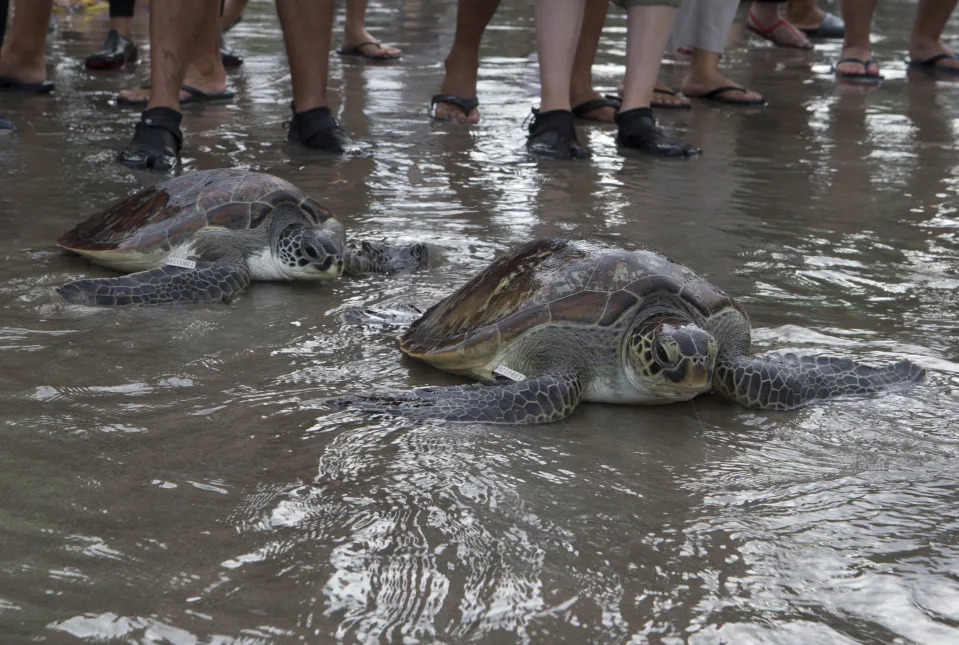
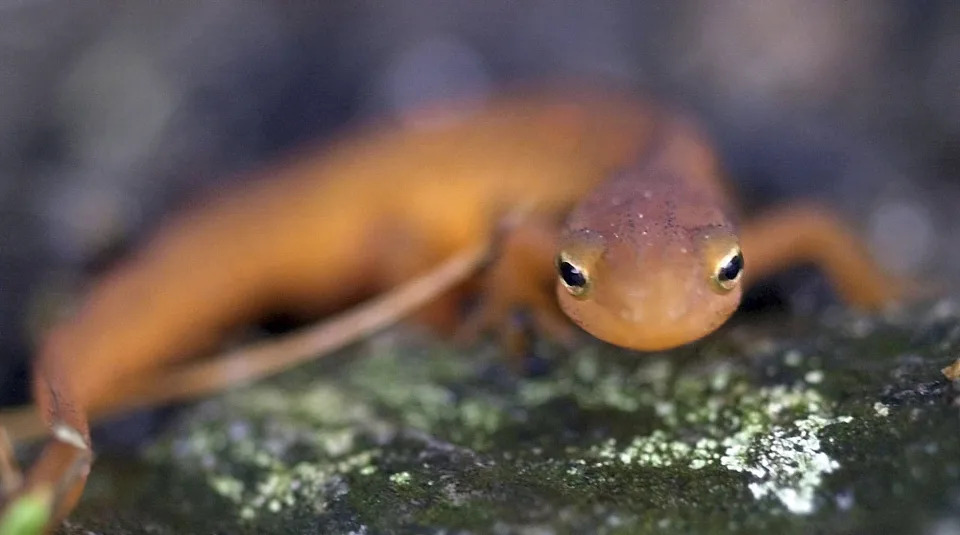
A spotted newt crawls in the rain on Aug. 1, 2003, in Unity, N.H. The International Union for Conservation of Nature, the leading tracker of global biodiversity, released their new Red List of Threatened Species on Monday, Dec. 11, 2023, at the United Nations climate conference in Dubai. Amphibians are particularly at risk, with 41% under threat of extinction.
Climate change is worsening the planet's biodiversity crises, making environments more deadly for thousands of species and accelerating the precipitous decline in the number of plants and animals on Earth, according to an international organization that tracks species health.
Species of salmon and turtles are among those facing a decline as the planet warms.
Atlantic salmon isn’t yet threatened with extinction, but its population dropped by nearly a quarter from 2006 to 2020, the International Union for Conservation of Nature, which tracks biodiversity around the globe, said on Monday. It’s now considered near threatened. They live in fewer places and face human-created hazards like dams and water pollution. Climate change is making it harder for the fish to find food and easier for alien species to compete, according to the group. Although there are some signs of hope: their numbers ticked up in Maine this past year.
The news was announced at the United Nations climate conference in the United Arab Emirates on Monday. Leaders of the IUCN updated their Red List of Threatened Species, a tracker of biodiversity around the globe. It was mainly bad news. The list includes information on 157,000 species, about 7,000 more than last year's update.
The IUCN said just over 44,000 species are threatened with extinction. That's roughly 2,000 more than last year.
“Species around the world are under huge pressure. So no matter where you look, the numbers of threatened species are rising,” said Craig Hilton-Taylor, head of the Red List unit at the IUCN.
Climate change is worsening conditions for about 6,700 species threatened with extinction.
The Central South Pacific and East Pacific green turtle is at greater risk because of climate change, for example. Fewer turtles hatch as higher seas inundate nests. Warming waters can harm its food supply of seagrasses.
The update includes the first broad assessment of the health of freshwater fish species. One-quarter of species — just over 3,000 — face an extinction risk. As climate change raises sea levels, salt water is traveling further up rivers, for example. And these species already face tremendous threats from pollution and overfishing, the IUCN said.
Frogs, salamanders and other amphibians are suffering the most. About 41% of these species are under threat.
“They are climate captives because of higher temperatures, drought — whatever happens amphibians cannot move out of harm's way and are directly impacted by climate change,” said Vivek Menon, deputy chair of the IUCN's species survival commission.
There was a bit of good news. Two antelope species are fairing better, although they still have a long way to go before their long-term survival is stabilized. For example, the scimitar-horned oryx, a light-colored animal with curved horns, had previously been categorized as extinct in the wild but is now endangered. It faced a lot of threats: poaching, drought and car accidents all played a role in largely eliminating the species by the turn of the century. But recent efforts to reintroduce the species in Chad have helped and there are now at least 140 adults and more than twice as many calves on a large nature reserve.
IUCN's director general Grethel Aguilar said it's clear humans need to act to protect biodiversity and when conservation is done right, it works. To combat the threat posed by climate change, she said fossil fuels need to be phased out, a contentious focus of this year's COP28 negotiations.
“Nature is here to help us, so let us help it back," she said.
___
The Associated Press receives support from the Walton Family Foundation for coverage of water and environmental policy. The AP is solely responsible for all content. For all of AP’s environmental coverage, visit https://apnews.com/hub/climate-and-environment
Study identifies Florida’s potential invasive species threats
IMAGE:
MACACA-FASCICULARIS
view moreCREDIT: UF/IFAS
In a first-of-its-kind study for North America, scientists accumulated a list of potential invasive species for Florida, and researchers deemed 40 pose the greatest threat.
A team of experts, led by University of Florida scientists, evaluated terrestrial, aquatic and marine species with characteristics that make them particularly adept at invasion. Their list includes 460 vertebrates, invertebrates, algae and plants.
“Invasive species management tends to be reactive, instead of preventative,” said Deah Lieurance, who led the project as the then-coordinator of the UF/IFAS Assessment of Non-Native Plants and is now an assistant professor of invasive species biology and management at Penn State University. “This was the reason behind this project: to protect Florida’s natural areas, while also saving the money and effort that would go into management strategies.”
The Intergovernmental Science-Policy Platform on Biodiversity and Ecosystem Services estimated that the annual cost for invasive species management globally in 2019 was $423 billion, and that cost is estimated to quadruple every decade.
Florida is “ground zero” for invasions in the United States, says Matthew Thomas, the director of the UF/IFAS Invasion Science Research Initiative, which was created in 2022 to address the state’s unique challenges.
Lieurance and the working group of experts from academia, state and federal agencies, and non-profits conducted what is known as a horizon scan, or the systematic examination of information by experts to identify emerging issues, opportunities and unknown risks to inform policy and decision-making.
Each species evaluated was given a score based on the likelihood of arrival, likelihood of establishment and spread, and their potential ecological, economical and human health impacts. The group of experts then met to form a consensus on ranking the species by risk level. Based on these scoring parameters, some of the most likely invaders were determined to be alewife, zebra mussel, crab-eating macaque and red swamp crayfish.
Validating the priority rankings of the highest risk species was the small population of red swamp crayfish that was detected and eradicated in Clay County in 2022, Lieurance said.
“The one that wasn’t even on my radar was the macaque,” Lieurance said. “But they’re already in the state in captivity, and as their name says, they’re good at eating crabs. This means they would have an impact on our native biodiversity. Plus, their relative, the rhesus macaque, is already established in the state, and these crab-eating macaques also are likely to host the same [herpes B] virus found in the Silver Springs State Park populations.”
The experts also considered potential pathways that could bring these invaders to Florida, finding that arrivals by escape from confinement (pet and aquarium releases) and transportation (stowaways and contaminants) were most likely.
“Something that came up in the time since we convened this group was the yellow-legged hornet, a species that wasn’t evaluated in this study,” Lieurance said. The predatory species was found just across the border, in Savannah, Georgia, this past August. “It’s likely that’s one species that would appear as high risk for invasion to Florida, if the horizon scan was done today.”
Lieurance says this research serves as a starting point for future horizon scans, which she suggests should be done every five years or so.
“Now that we have a list, the process next time would involve reviewing what’s there and seeing what new things are coming in, or have the potential to appear,” she said.
But the methods employed for this study are already leading to new approaches nationwide.
“A team from the United States Geological Survey took part in this project, evaluating one of the taxonomic groups,” Lieurance explained. “They took their experience back to their superiors and now at a federal level, the Department of Interior is using bipartisan infrastructure money to fund other horizon scans using this same framework as a part of their National Framework for Early Detection and Rapid Response. This is just one example of how we can already see this project expanding.”
Currently, Lieurance is leading ongoing horizon scan projects for Puerto Rico and the U.S. Virgin Islands, as well.
“As the saying goes, an ounce of prevention is worth a pound of cure,” Lieurance said. “The majority of prevention efforts are initiated when the species has already been detected and often when it's too late. This project strives to keep concerning species out and truly protect Florida's biodiversity, unique ecosystems, socioeconomic infrastructure, and human well-being.”
The study, “Identifying invasive species threats, pathways, and impacts to improve biosecurity,” was funded by the Florida Fish and Wildlife Conservation Commission and the UF/IFAS Dean for Research. It is published in the journal Ecosphere: doi.org/10.1002/ecs2.4711.
Zebra mussels
CREDIT
Dave Britton/USFWS
Alewife
CREDIT
Ryan Hagerty/USFWS
Crayfish
CREDIT
USGS
JOURNAL
Ecosphere
ARTICLE TITLE
Identifying invasive species threats, pathways, and impacts to improve biosecurity
ARTICLE PUBLICATION DATE
14-Dec-2023
Colombia confirmed as host of next UN biodiversity talks
AFP
Fri, December 15, 2023
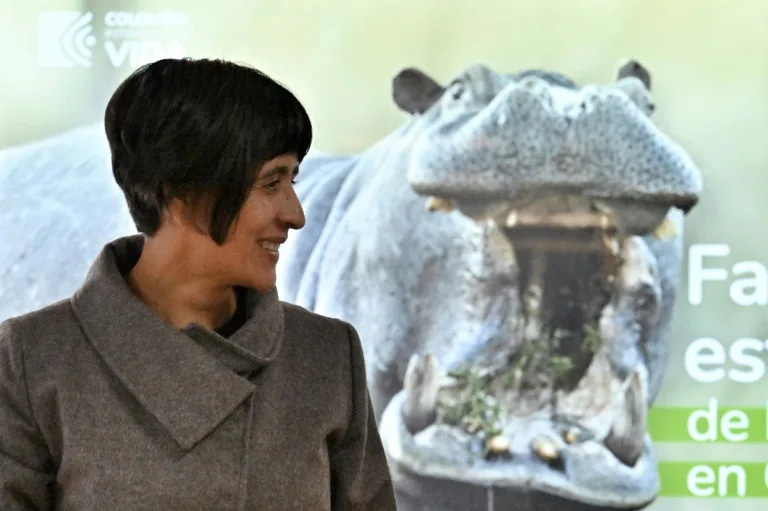
Colombia's Environment Minister Susana Muhamad smiles during a press conference to announce that some of the 166 hippopotamuses belonging to slain cocaine baron Pablo Escobar will be euthanized (Juan BARRETO)
Colombia was officialy confirmed Friday as the host of the the UN's next biodiversity summit to be held in late 2024 after Turkey backed out.
The COP16 biodiversity summit would follow up on a landmark deal at the last talks in 2022 in Montreal which promised to preserve 30 percent of the planet's land and seas by 2030.
It comes as climate change threatens an increasing number of species, with 25 percent of the world's freshwater fish species at risk of extinction, according to the latest red list assessment by the International Union for Conservation of Nature.
Meanwhile invasive plant and animal species introduced intentionally and unintentionally by humans in new ecosystems are exacerbating the extinction crisis and causing global economic losses of hundreds of billions of dollars a year.
Susana Muhamad, Colombia's minister of environment and sustainable development, said: "This is going to be a great opportunity for one of the most biodiverse nations in the world," adding it "sends a message from Latin America to the world about the importance of climate action and the protection of life."
The Montreal summit also raised pledges to commit $30 billion a year for developing countries to halt human-caused extinction of threatened species.
The UN Convention on Biological Diversity, which formally approved Colombia's bid, had been urgently seeking a host for the talks that are scheduled from 21 October to 1 November 2024.
David Cooper, the Convention's acting executive secretary, said: "The Secretariat is delighted to have the Government of Colombia as host of COP 16.
"Colombia is home to tremendous biodiversity, is an inspiring example of how to engage with indigenous peoples and local communities and is at the forefront of the conservation and sustainable use of biodiversity."
Unlike the climate COP, the biodiversity COP -- which stands for Conference of Parties -- takes place every two years.
Turkey, which pulled out of hosting duties citing the need to recover from earthquakes, has offered to hold climate talks in 2026.
ia/jh
No comments:
Post a Comment